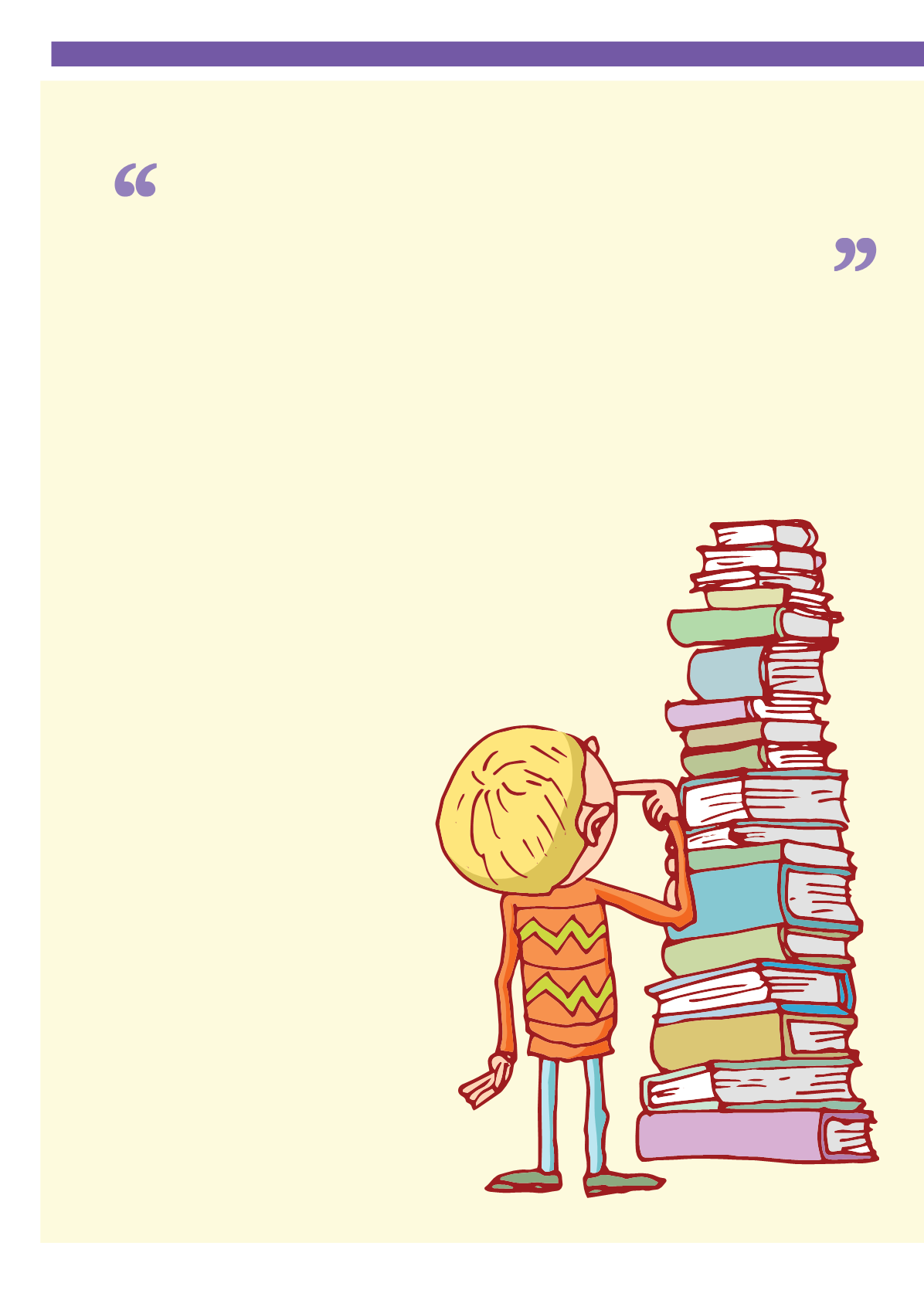
Tough love
The book that Lemov haswrittenwith
EricaWoolway andColleenDriggs is
called
ReadingReconsidered
and subtitled,
APractical Guide toRigorous Literacy
Instruction. “It does sound a little like a
chapter heading in aDickens novel,” he smiles
when asked about this choice of language. “But
we selected thosewords carefully. ‘Practical’
is important –we really didwant tomake
this book useful for teachers. Theory and
philosophy can be helpful, of course, but we
were keen to talk about what actually happens
in classrooms. And it’s deliberately piecemeal;
we see it as a book of tools, so people can take
aspects of it, give thema
try, see if theywork.
Teachers already
do a lot right,
there’s no need
for a ‘change
everything from
the ground
up’ approach.
You can take
something fromthis
book and test it out with
your students tomorrow,
without the angst of a ‘full
reboot’.” And ‘rigorous’?
“That has to be the goal
for all kids,” Lemov insists.
“Besides, rigour and joy are
notmutually exclusive!”
There are four key
precepts at the heart
of
Reading
Reconsidered
: read
harder texts; ‘close
read’ texts rigorously
and intentionally; read
more nonfiction, more
effectively; writemore
24
TEACH READING & WRITING
L
et’s get a couple of things straight
fromthe start: Doug Lemov doesn’t
want to tell you, technique by
technique, how to teach; nor does
he think you are currently doing it
all wrong. Despitewhat some of his critics
seemto believe, his popular but polarising
handbook
Teach Like a Champion
was
nevermeant to be used as a rigid blueprint
for a single pedagogical ‘style’ – rather, it
was a collection of simple strategies that
Lemov knew to be effective, fromextensive
observation of successful classrooms,
offered to educators so they could try them
out for themselves.
And now, alongside two
of his colleagues at Uncommon Schools, he
has taken the same approach to encouraging
us to rethink a very specific area of the
curriculum: reading.
“Our aim is always to highlight the benefits
of constant reflection,” he explains. “And there
are very good reasons to reflect, rigorously,
on howwe teach reading at themoment,
andwhat we are sure is the right thing to
do.” One of those reasons – undeniably
compelling – iswhat Lemov describes as “the
tyranny of correlation” linking socio-economic
backgroundswith literacy attainment.
When it comes to closing the gap, it seems
we are not succeeding nearly aswell with
reading aswe arewith other subjects. “State
assessments show that a student’s level
of proficiency in reading is 1.5-2 times as
strongly correlatedwith socio-economics
as is his or her competency inmathematics,”
Lemov points out. “What havewemissed?
Andwhat is the cost of that correlation to a
society that’s built onmeritocracy? Reading
is the key skill that opens doors to any kind of
academic endeavour, and evidence shows that
toomany of our young people are applying for
university not remotely prepared for the kinds
of complex, deep reading theywill be required
to do there.”
Can we really develop a love of reading in children by
giving them harder books?
Doug Lemov
thinks so...
Rigourandjoyare
notmutuallyexclusive


